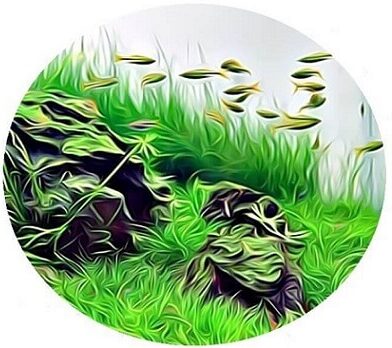Fish Tank Basics
14 Essential Tips – How to Start an Aquarium.
Because we want to Save Time & Money.
If you are here reading this aquarium basics care tutorial, chances are you want an aquarium because you are like me, and you like fish, invertebrates, and aquatic plants. Maybe your children are asking for a fish tank, or your spouse saw one in a friend’s house, and you decided to research this.
After some minutes of thinking about this new idea, some questions pop up in your mind:
- How much time will I need to spend taking care of my aquarium?
- I bought a Costco Travel Package! What will I do when I go on a family trip? Who will take care of the fish?
- Why would I have a fish tank, not a cat or dog?
- Should I get a freshwater or saltwater tank?
I want to help you to answer them or give you some information so you can digest it and make up your mind.
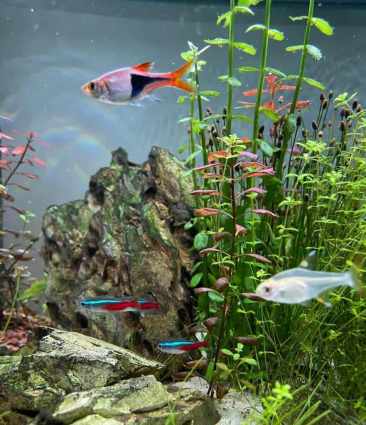
This is a basic aquarium care guide.
Am I forgetting to answer some common questions? Please let me know and help me build this ultimate guide so we can help someone else.
You can talk to me using this form.
Table of Content
Is it hard to maintain a freshwater aquarium?
No! It is definitely not difficult to maintain a freshwater aquarium, especially if you inform yourself and plan first, buy the necessary accessories and follow some initial steps.
When I say initial steps, I mean waiting a few days for your water to mature (cycling), buying the right fish for the water you have in your tank, or adjusting your water for the fish you want to have.
In this article, I will cover all these steps.
I will even explain what to do when you go on vacation, for example, how much time per day and week you must dedicate to your aquarium and many other common questions.
Read this article and plan for your new project.
What do I mean by livestock?
When we think about an aquarium, we think about fish, plants, rocks, and decorations. Still, in truth, there are more live animals you can keep in an aquarium, like, for example, snails, shrimps, and frogs (there is a topic down discussing this subject).

So whenever you see the word “livestock” I mean to say all these beings.
Why should I have an aquarium?
There are many reasons to have an aquarium.
They are stunning and help to relax like many other hobbies; they can reduce stress, as watching fish swim can be soothing.
Do you like plants and gardening? If you go with a planted tank, you can even practice your gardening skills.
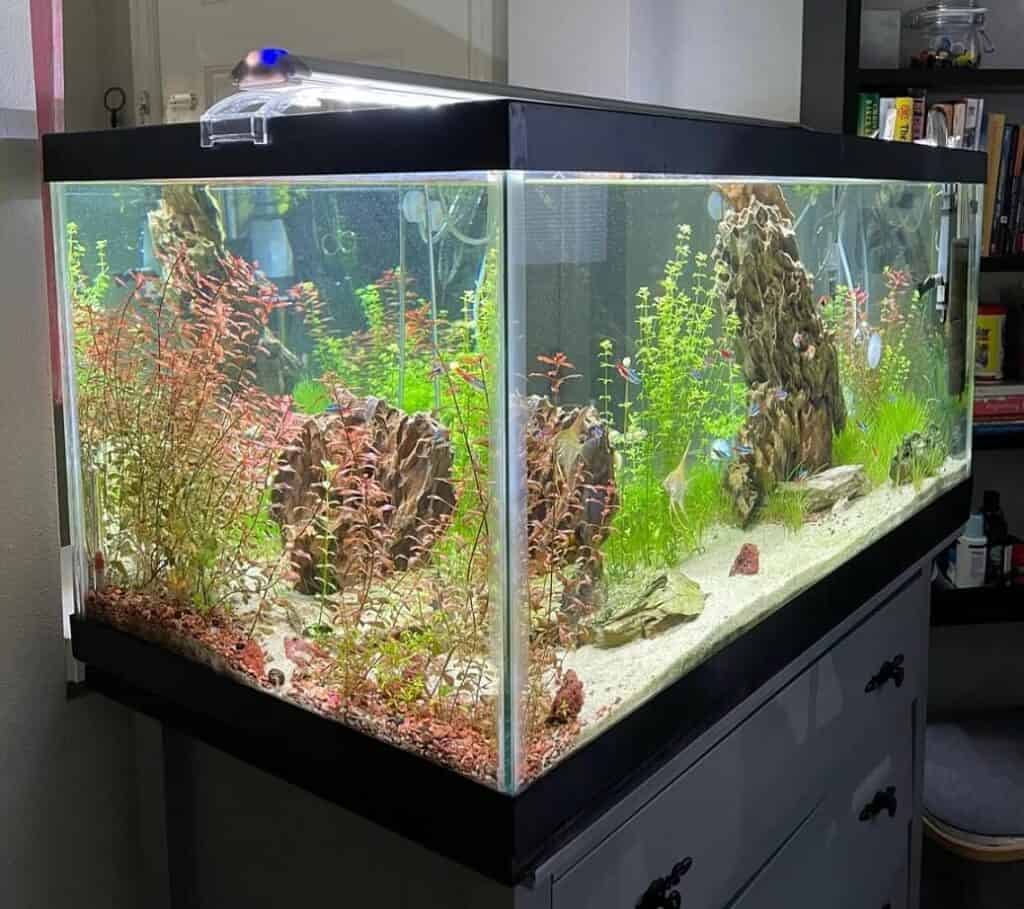
They are an exciting and unique addition to the decor of a home or office. They can be a great way to bring a little nature into your home or office.
Caring for an aquarium can also be a rewarding experience. It can teach responsibility due to the importance of monitoring and maintaining the fish’s environment. It can also be a fun hobby that allows you to learn about different types of fish and aquatic plants.
They can also be educational, as they can teach adults and children about different types of fish and their habitats.
Overall, an aquarium can be a great addition to any home or office, providing many benefits and enjoyment. Keep reading this fish tank basics tutorial to learn more.
What are the benefits of an aquarium for kids?
As I mentioned above, aquariums can teach children about different types of fish, their habitats, and the importance of caring for living creatures. It teaches responsibility, too, as they will need to take care of the aquarium and fish and monitor and maintain the environment.
They will learn that mistakes are normal and can be fixed. They will learn that sometimes things are outside their control, and they need to accept them.
There is also the scientific point of view. An aquarium can be a great way for children to learn about science and biology and can help to develop an interest in these subjects. It brings a sense of wonder and appreciation for Nature. An aquarium can help children to appreciate the beauty and diversity of Nature.
Overall, having an aquarium can be a great way to introduce children to the natural world and can help to inspire curiosity, creativity, and a sense of responsibility.
What to do with my aquarium when I go on a family trip?
Taking care of your aquarium while you are off with your family is pretty easy. It’s not like a dog or cat, but you need to understand a couple of things.
You will need to, at minimum, have a plan for feeding your fish and livestock and turn on and off the lights and aerator if you are going to stay more than 3 to 4 days off.
Feeding your fish and livestock when you are not home
First of all, your livestock will be fine without food for 3 to 4 days. It is actually recommended to keep them fasting for a couple of days from time to time. So if you are going to stay the weekend off, don’t worry about food.
Still, if you are going to stay a week or two, you can ask a friend to come once per day or every two days to feed your fish, or you can buy a simple and cheap automated fish feeder like this one.
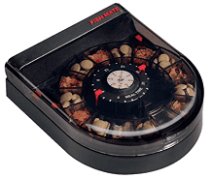
I strongly recommend you start feeding your fish with this device 4 or 5 days before leaving your house, so you will ensure it is working as you expect it.
What to do with your tank lights when you are not home for a couple of days:
First, if you don’t have live plants, turn off the light and leave it off until you come back. Give some rest to your livestock. They will enjoy this time without lights.
If you have live plants, you probably already have a timer (mechanical or digital) or a smart plug, so you don’t need to do anything during your time off.
If you don’t have an automated way to turn on and off your lights, I recommend you buy a digital timer like this one or a smart plug like this one. It will help you during your vacation as you can easily set them up to turn on and off your lights.
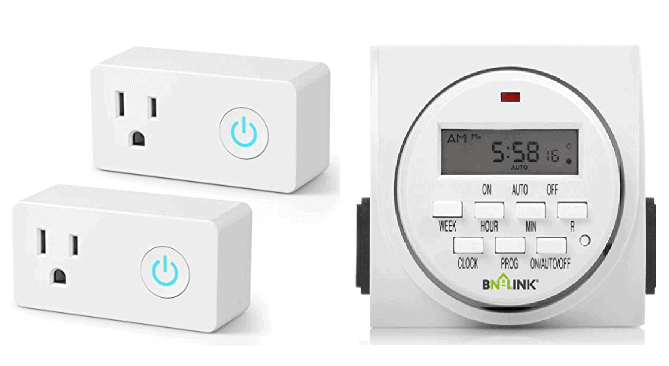
What do to with my aquarium aerator while I am off for vacation?
Your fish and livestock will be perfectly fine without the aerator turning on for some days. If you are going to stay 3 to 4 days off, don’t worry about this.
If you are going to spend a week or more on vacation, I recommend you to set up a digital timer or smart plug to turn on and off your aeretor.
I recommend you buy a digital timer like this one or a smart plug like this one.
I replaced my digital timers with smart plugs years ago because I can check their status far from home using my cell phone. Still, I have used those digital timers for years, and they never failed.
One last thing: I will not say anything about the water heater because they turn on and off based on the desired temperature.
Suppose, for any reason, you have a heater that doesn’t turn on and off automatically; I strongly recommend you to buy one as temperature variations can cause health problems to your fish, so this is something you must have anyways.
How much time per week would I need to dedicate to my freshwater aquarium?
The amount of time you need to dedicate to your freshwater aquarium will strongly depend on the size and complexity of the aquarium types of fish, livestock, and plants you have.
After reading this chapter, you will have a pretty good idea about how much time you will spend based on what you plan to have.
For a simple tank with fish, rocks, and a couple of simple live plants, on average, you should take about 30 to 45 minutes per week for maintenance.
For a planted tank, it’s tough to estimate the amount of time as you will need to trim plants once per month or, if they grow fast, twice per month.
If you have water parameter issues, you will have algae that you will need to remove. On average, you should work on your tank for about 45 to 60 minutes per week.
Here are some of the tasks you will need to do on a regular basis:
- Feeding the fish
- Water changes: aquariums require a water change of about 15%-30% once a week or every two weeks.
- Checking your aquarium water parameters: you should check at least the temperature, pH, and ammonia of your water regularly to ensure they are within the appropriate range for your fish and plants. It will take you about 5 to 10 minutes. You should check every day in a newly created aquarium for 2 to 3 weeks. After 2 or 3 weeks, your aquarium water parameters should stabilize and keep steady. When it happens, you can check twice per week. After another couple of weeks, you will feel confident, and you can start checking twice monthly. There are other water parameters (read this tutorial – click here) that you will start to hear after you dive deep into the hobby, like, for example, Nitrite, Nitrate, GH and KH, but for now, let’s keep it simple.
- Cleaning the tank: This includes cleaning the glass, removing algae, and cleaning any decorations or ornaments in the tank. It can take from 5 to 20 minutes.
- Equipment maintenance: You will need to check and maintain the equipment like filter and media, heater, lighting, etc. Sometimes you don’t need to do anything, but you need to check them at least.
It’s important to note that these are general guidelines.
Always follow the instructions of the equipment you are using.
Research the needs of your livestock. Some species may require more frequent care, which may take more time.
Overall, having a freshwater aquarium can be an enjoyable hobby but requires some regular attention.
Keep reading this fish tank basics tutorial and find out more.
Why should I have an aquarium instead of another pet?
Aquariums are a great alternative to other types of pets for a variety of reasons:
- Low-maintenance: Aquariums typically require less care than other types of pets, such as dogs or cats, making them a good option for people who have busy schedules or who are not able to dedicate a lot of time to their pets.
- Family vacation: if you are going to spend 3 to 4 days out, you don’t need to worry about your aquarium (read this article). With other pets like dogs and cats, you will usually need to pay someone to take care of them.
- For longer than four days, you can easily automate with cheap devices the tank maintenance until you come back. Check this article.
- Space requirements: Aquariums take up less space than many other types of pets, which makes them a good option for people who live in apartments or small homes.
- Allergies: Some people are allergic to certain pets, such as dogs or cats.
- Peaceful: An aquarium can create a peaceful and calming atmosphere in a room, and, come on, they are super cool.
- Cost: aquariums are less expensive than many other pets. Think about vaccines, and veterinarians, for example.
- Variety: there are a wide variety of fish and invertebrates that can be kept in freshwater and saltwater aquariums, which allows for much customization and personalization.
What is the difference between a saltwater aquarium and a freshwater aquarium?
The difference is pretty obvious, but I know you want to know more than the kind of water they use (one uses salt water and the other one uses freshwater) so here we go.
The saltwater aquarium houses marine fish, invertebrates, and coral reefs. They can be more complex, require more attention and care than freshwater aquariums, and are generally more expensive to set up and maintain.
Saltwater aquariums with live corals are even more complex!
On the other hand, freshwater aquariums are generally less complex, require less attention and care than saltwater aquariums, and are less expensive to set up and maintain.
I say “generally” because when you start to talk about high-tech freshwater planted aquariums, with CO2 injection, complex light schedules, and fertilization, things start to get complex too.
Both types of aquariums have their own characteristics, and the choice between them depends on the individual’s preference, time available to the hobby, budget, and experience level.
Saltwater or Freshwater? Which aquarium should I choose?
I suggest you visit a fish store where you have freshwater and saltwater stuff. Check fish, shrimp, corals, frogs, and other livestock prices. Start to have an idea about what you want to have in your tank.
If you are still considering saltwater aquariums, keep reading the next chapter.
Saltwater or Freshwater? Which aquarium is easier to maintain?
Freshwater aquariums are generally easier to maintain than saltwater aquariums. Some reasons for this:
- Cost: saltwater aquariums require specialized equipment and chemicals that can be costly when compared with the freshwater required equipment.
- Cost: Saltwater fish and invertebrates are generally more expensive too. Corals are amazingly beautiful but expensive too.
- Fish and Invertebrates: Freshwater aquariums typically house a wider variety of fish and invertebrates that are easier to care for than those found in saltwater aquariums. Saltwater fish and invertebrates are often more delicate and require more precise water conditions.
- Water Chemistry: Freshwater aquariums are typically less demanding in terms of water chemistry than saltwater aquariums. Saltwater aquariums require a more precise balance of pH, salinity, and other chemical levels, which can be more challenging to maintain. This article can help you to understand all these water parameters in detail.
That being said, it’s important to note that whether an aquarium is a freshwater or saltwater, it still requires regular maintenance and monitoring to ensure the health and well-being of the inhabitants.
Additionally, a freshwater aquarium can still have its own challenges. Algae surges, ammonia spikes, and when it comes to keeping certain species of fish, shrimps, or plants that may require a more specific water condition.
What is the difference between an aquarium and a planted aquarium?
A non-planted aquarium and a planted aquarium are similar in that they both contain fish and water, but they have some key differences.
A non-planted aquarium typically has a simple setup with a few decorations and ornaments. It may include some live or artificial plants. The focus is mainly on the fish.
On the other hand, a planted aquarium is designed to mimic a natural freshwater environment (river or lake), and the focus is on the plants.
A planted aquarium will typically have various live plants, ranging from simple, hardy species to more complex and delicate species. These plants are often used as the main decoration in the tank.
Planted aquariums require more specialized care than regular aquariums. They need specific light and fertilization and, in some cases, CO2 injection (see next chapter for High Tech planted aquarium) to sustain the growth of the plants. Additionally, planted aquariums often require more maintenance in pruning, trimming, and replanting the plants.
In summary, regular aquariums are generally simpler to set up, maintain, and focus on the fish. In contrast, planted aquariums are more complex and focus on the plants, mimicking a natural environment, and require more time and specialized care.
What is the difference between a low-tech planted aquarium and a high-tech planted aquarium?
The high-tech planted aquarium:
The high-tech planted aquariums are aquariums that use injected CO2 to accelerate the growth of plants.
It’s not the end of the world like it could look when you read this sentence, but it is something else you need to research and work on.
The CO2 injection needs to start hours before the lights go on, usually 2 hours before, but it depends on the size of your tank, the size of your CO2 diffuser, and how much CO2 you inject.
By doing that, the water can reach the proper level of dissolved CO2 in it in a way that when the lights go on and plants start to consume CO2 for their photosynthesis, they will have all the needed CO2 and will grow at their maximum capacity.
The low-tech planted aquarim
The low-tech planted aquarium also uses good quality lights and fertilizers (but not injected CO2) to stimulate the growth of plants.
Low-tech planted aquarium owners play around with the amount of light and quantity of fertilizer to grow their plants.
But then you ask me: and about the CO2?
Plants consume CO2 during the day (lights on) in their photosynthesis process. During the night, when the lights go off, plants consume O2 and generate CO2 (photosynthesis, too). This CO2 stays in the water and is used during the day. Obviously, the quantity of dissolved CO2 generated by the plants will not be high like when you have injected CO2, so the plants’ growth will not be at their maximum capacity.
Well, there are ways to trick this process. If you are really into it and curious about this Low Tech Planted Aquarium and CO2, research “Siesta in Planted Aquarium,” and you will learn a lot about it.
Siesta in low-tech planted aquarium
Some Low Tech aquarists use the “siesta” process to turn off their lights in the middle of the day for, let’s say, 3 to 4 hours in a way to cheat their plants into believing that it is already night so they will produce CO2 again (and consume O2).
When they turn on the light again, for the second time in the day, the CO2 levels in the water will be high again.
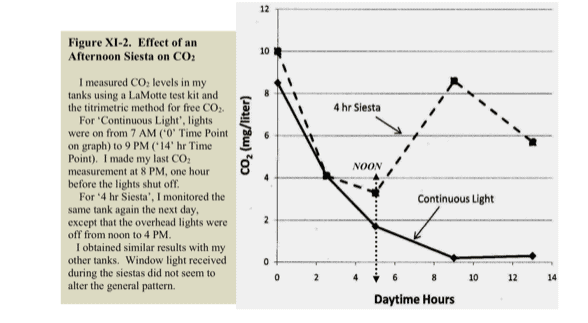
So, they turn on the light for about 4 hours, turn it off for about 3 hours and turn it on again for another 4 hours.
Isn’t this incredible?
If you want to get into it, check this forum discussion from Aquarium-Coop and special thanks to Mr. Streetwise for sharing his knowledge.
If you want to go even deeper, buy this book from Diana Walstad. Another good source of information can be found here.
A freshwater aquarium is what I want.
After thinking for a while, you decided to have a freshwater aquarium, not a saltwater aquarium, and not a planted aquarium.
You want to start small because, again, your kids are asking to have a fish or you want to have an aquarium, but you have yet to determine if you will like it or not, so you want to start small and don’t want to spend a lot of money yet as you want to feel the hobby.
These are the two options you have.
Start with a small tank, and one Betta fish (a topple ware is not a tank, and even betta fishes must have space), or you could try a medium size tank with different kinds of fish (maybe 4 to 6 small fish or maybe 1 or 2 bigger ones), rocks and perhaps some snails.
Click here to learn more about how to take care of your betta fish.
In both cases, you will need a couple of required accessories that I am listing below.
Freshwater aquarium essential accessories
When you go to a fish store, you find a diversity of fish tank accessories, which can cause some confusion about what to buy at first, what you really need, or what you can buy later.
I want to help you to buy what is really essential, what you will need to have to set up your tank, do the decoration, put water on it, and leave it there maturing or, as we call it in our aquarium community, “cycling” for some weeks until your water gets ready for fish.
You must wait to put fish in your tank until your filter and water get ready for them. This is called cycling your water. Learn more about how to cycle your water in this article.
It is the process of creating good bacteria in your filter, water, and substrate that will later take care of your fish waste, for example.
I have detailed steps on how to properly cycle your aquarium water in this article, along with some tips on accelerating this process.
I strongly suggest you read it as soon as you have water in your tank.
List of essential accessories to make your aquarium:
- The tank itself
- A water filter (click here to learn about the different kinds of filters)
- Water Heater and a thermometer
- Substrate (sand or rocks)
- Decoration pieces
- Light
- pH water test kit or digital pH meter
- Ammonia water test kits
You can find more information in these two articles:
Fish Tank, where I explain about types of aquarium tanks (glass or acrylic tank, sizes, and tank format),
Water Parameters in which you will learn about pH, ammonia, levels of nitrite and nitrate, and how to adjust them when needed.
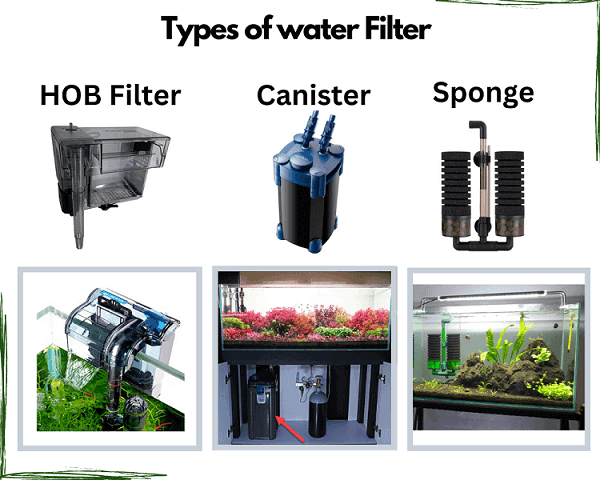
As you will see in the “Fish Tank” article, having a small tank is not always easier than having a medium tank, as things can get complicated very fast”.
As soon as you have these accessories, go ahead and find the right place to set up your tank.
Tip: Avoid places where the tank will get direct sunlight as it will cause algae, and you will regret your decision.
Suppose you want to have a betta fish. In that case, I have a dedicated article where I explain the minimum size of the tank you should have, the ideal temperature, pH, if they like to have plants in the tank, if you can have more than one betta in the same tank and much more information to help you.
Setting up your freshwater aquarium step by step.
I want to be very clear to avoid fish fatalities: you must not put fish in your tank until you are sure your water and filter are ready for them.
This is called cycling your water. It is the process of creating good bacteria in your filter, water, and substrate that will later take care of your fish waste, for example.
Setting up a new freshwater aquarium is a very straightforward process if you follow the proper sequence.
You will need to:
- Put your new tank in your garage or outside and fill it with water to check if there is some leak. You don’t want to realize there is a leak when everything is installed and ready and your tank is inside your house.
- Find the place you want to put your tank, avoid direct sunlight, and make sure you have a power outlet close to it.
- If you bought a rimless tank, also called braceless tank, you will need a “mat for rimless” tank. As an alternative, you can use polystyrene or Styrofoam. What is a rimless / braceless tank? What is this mat? Look here.
- Prepare the water you are going to use. If you are going to use TAP water, make sure you use a water conditioner to remove chemicals like chloramine. You can use Distilled or RO water as an option. Read more about the conditioner or Distilled and RO Water here.
- Prepare your substrate following the manufacturer’s instructions, as sometimes you must wash it before use. If you want sand, I suggest a Swimming Pool filter sand from HTH called “HTH 67074”. Check types of substrate here.
- Install your Water filter following the instructions provided by the manufacturer. Always buy a filter suitable for your tank water volume or a little more. Tip number one: Check the noise level of the filter and try to find one that is quiet. Tip number two: buy a pre-filter like this one. It will save you some time when cleaning the filter.
- Have your pH and Ammonia water test kit ready.
- Gently put the water into your tank
- Start to work in Water Cycling as described in this article.
- Wait for the Water Cycling to be completed. Make sure the water is ready.
- Bring a little of your water to a Local Fish Store and ask them to test your water. They usually don’t charge you for this as they know you will buy fish from them.
- If they give you a thumbs up, you will be in a good position to buy your fish. After they test your water, you will know your pH, and you will be able to choose fish and invertebrates that are compatible with your water pH.
I strongly recommend you start with one or two fish first.
You can use my “How Many Fish in a Tank” Online Calculator to help you to figure out how many of them you can have in your tank.
Don’t forget to acclimate your fish.
New Fish Acclimatization is crucial for the newcomers and the current aquarium inhabitants. Follow this step by step.
After some weeks, you can buy more if you want. By doing that, you will avoid lose all your fish if something is wrong with your water.
Going slow will also give your filter and good bacteria time to increase their efficiency.
I made this Step-by-Step tutorial, with pictures, to show you all the necessary steps. Look and follow these steps if you need detailed instructions on some of these steps.
Do you want to learn more about how to plant your plants, space between them and more? Check this article.
Easy aquatic plants to start
Some aquatic plants are easier to maintain in your tank when compared with other ones. Some of them need fertilizers; others need higher light levels.
Check out this Top 13 Easy-to-Grow Aquatic Plants for your aquarium. They are Amazing and don’t need CO2, Strong Light or Special Soil.
Beginners fish ideas
Betta fish are a trendy pet for many reasons. Resistant and easy to care for, they are an excellent starting option.
Molly fish are the most recommended species for beginner aquarists and fish tank lovers. They are a great beginner fish. With elegant colors in white and black tones (black molly), this fish adds a touch of charm to any environment and gets along well with many species.
This is the end of this fish tank basics article, and I really hope you like it. I went through this process many times and I feel it would be good to share my learnings.
